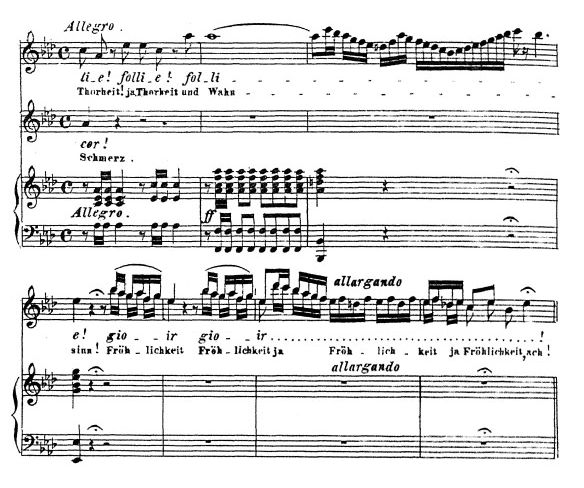
Driving/Pressing the Tone
A common vocal fault is one of pushing and pressing the tone, or some might say “driving the tone.”
This driving of the tone is accompanied by too much volume and too much weight with the pitch being either pushed down (flat) or pushed up (sharp). There will appear a harsh or steely edge to the tone, with nasality or throatiness or both. The vowels will be distorted, not pure. There will be a sense of rigidity as opposed to a flexible firmness.
Basically, the healthy balanced function of the voice is completely disturbed as a person stresses and strains. The sound might appear impressive, but it is actually dangerous as natural function is bypassed. This path is abusive and leads to vocal deterioration.
When one is used to singing in this manner, then the corrective would be to stop pushing and pressing. It is important to note that when one does so, that the voice “seems” to fall apart. The reason is that the voice has been forced to function – pushed for so long – that it literally physically does not know how to function naturally.
So, one must be led through a process with vocal exercises designed to reeducate the muscles as to their jobs. One of the first steps then is to reduce the volume (as one can) and to sing quicker exercises to encourage spontaneous movement. As the muscles do the work without being forced, there is a balance achieved between the moving muscles and the moving air plus the size and shape of the vowels. This balance gives a person a vocal sound that is both firm and flexible with a resonant quality that has carrying power without forcing.
about the author
Allen Rascoe Allen has been enjoying singing since he was a little kid. He officially studied voice at ECU and USC. However, he ran... Read More

RECENT ARTICLES
-

Career Your Opportunities for a Fulfilling Career in Singing
-

Basic Skills, Beginners, Tips Tips To Improve Your Singing Voice
-

Exercises, Warmups 10 Vocal Warm-ups to Change the Way You Sing
-

Basic Skills, Beginners, Exercises, Songs, Voice Teachers, Warmups What is My Vocal Range – Identify, Master and Expand Your Range
RECENT IN KNOWLEDGE
Recent Topics
- Beginning Voice Lessons (1)
- Breathing Techniques (1)
- Confidence (1)
- Experienced Teacher (1)
- Kids Singing Lessons (1)
- Musical Career (1)
- Practice (1)
- Private Lessons (1)
- Professional Singer (2)
- Sing (1)
- Singing Teachers (2)
- Style (1)
- Teach Online (1)
- Vocal Exercises (1)
- Vocal Health (1)
- Vocal Music (1)
- Vocal Pitch (3)
- Vocal Range (4)
- Voice Coach (1)
- Voice Exercises (2)
- Voice Training (4)
- Young Vocalist (1)
Categories
- Basic Skills (7)
- Beginners (8)
- Career (2)
- CCM (1)
- Contemporary Commercial Music (1)
- Crossing Over (1)
- Exercises (2)
- Online Lessons (3)
- Online Voice Lessons (1)
- Songs (2)
- Students (6)
- Tips (4)
- Vocal Coaches (1)
- Voice Teachers (2)
- Warmups (2)
Testimonials

















